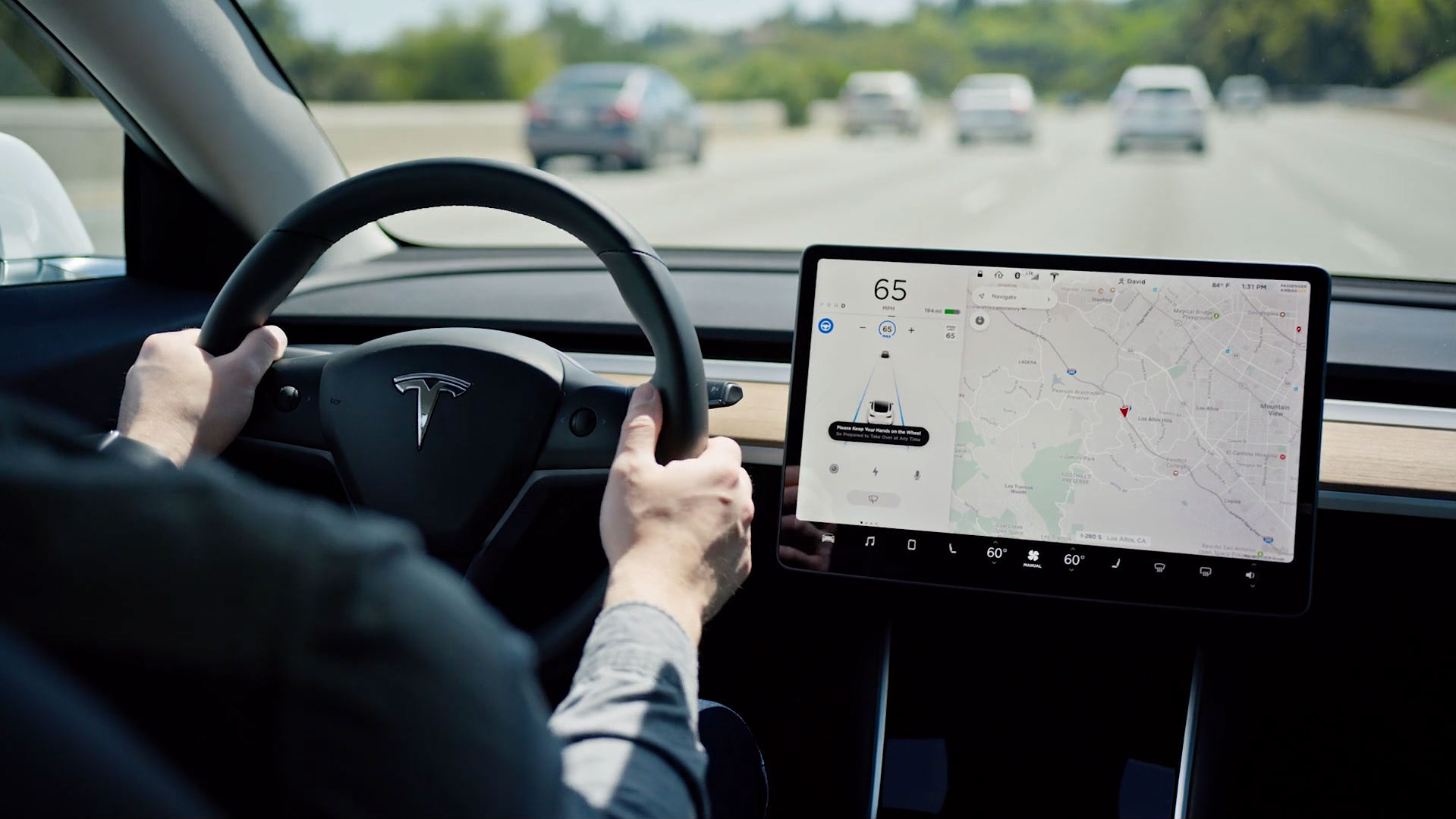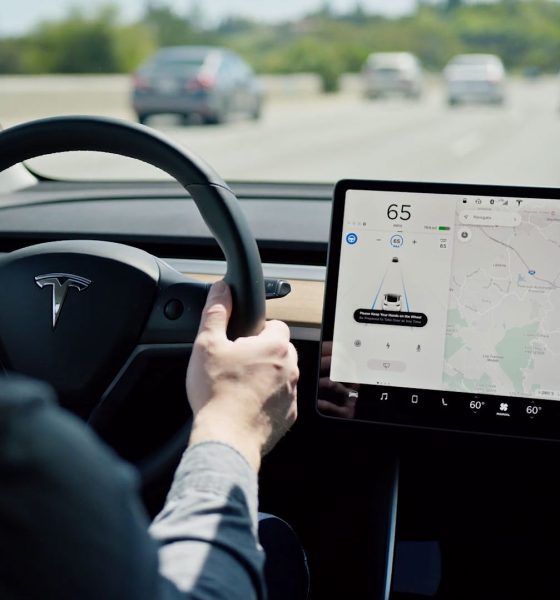

News
Tesla Q4 2018 Vehicle Safety Report: 1 accident per 2.91M miles with Autopilot engaged
Tesla has released the results of its Q4 2018 Vehicle Safety Report. Just like the company’s previous report in Q3 2018, Tesla released updated numbers for incidents that occurred both when Autopilot was engaged and when the driver-assist feature was deactivated.
Tesla released its first Vehicle Safety Report after the third quarter of 2018. During that period, the electric car maker registered one accident or crash-like event for every 3.34 million miles driven with Autopilot active, and one accident or crash-like event for every 1.92 million miles driven with Autopilot disengaged. During the time of the Q3 report’s publication, the NHTSA’s data noted that a car crash was recorded in the United States for every 492,000 miles driven.
In its Q4 2018 report, the company noted that its numbers include instances when its electric cars were hit by another object or vehicle. That said, here are the overall results of Tesla’s Q4 2018 Vehicle Safety Report.
“In the 4th quarter, we registered one accident for every 2.91 million miles driven in which drivers had Autopilot engaged. For those driving without Autopilot, we registered one accident for every 1.58 million miles driven. By comparison, NHTSA’s most recent data shows that in the United States there is an automobile crash every 436,000 miles.”
It should be noted that the fourth quarter covered the winter months of 2018, which have less daylight and result in more challenging driving conditions. This generally causes more incidents for all types of vehicles, both electric and fossil fuel-powered. The NHTSA does not release quarterly statistics for car crashes, though a closer look at the agency’s GES database shows that a similar pattern (an uptick in incidents during the winter months) was exhibited in 2014 and 2015. The NHTSA’s data for 2016 is currently unavailable.
Tesla’s vehicles, thanks to their all-electric design, are among the safest cars on the road. Being made of ultra-high-strength steel and aluminum, Tesla’s vehicles are sturdy. The electric cars have extra large crumple zones as well due to their all-electric design. These, together with a combination of passive safety, active safety, and automated driver assistance, work hand in hand help Tesla’s vehicles attain their stellar safety ratings from agencies like the NHTSA.
Elon Musk’s statements about the safety of Tesla’s electric cars are not empty. After all, the company’s vehicles are known for their high ratings with agencies like the NHTSA. The Model 3 and the Model X have gained perfect 5-Star Safety Ratings, and the Model S infamously broke one of the agency’s crash testing gear when it was being tested due to its durability. Today, the Model 3, Model S, and Model X stand among the NHTSA’s vehicles with the lowest probability of injury during accidents.
In true Tesla fashion, though, the company continues to make improvements on its vehicles’ safety features, as teased in recent patent applications hinting at safer airbag deployment systems using seat sensors, and damage monitoring systems that could proactively warn drivers when a component needs service or repair.
Tesla’s Q4 2018 vehicle safety report can be accessed in full here.

News
Tesla FSD fleet is nearing 7 billion total miles, including 2.5 billion city miles
As can be seen on Tesla’s official FSD webpage, vehicles equipped with the system have now navigated over 6.99 billion miles.

Tesla’s Full Self-Driving (Supervised) fleet is closing in on almost 7 billion total miles driven, as per data posted by the company on its official FSD webpage.
These figures hint at the massive scale of data fueling Tesla’s rapid FSD improvements, which have been quite notable as of late.
FSD mileage milestones
As can be seen on Tesla’s official FSD webpage, vehicles equipped with the system have now navigated over 6.99 billion miles. Tesla owner and avid FSD tester Whole Mars Catalog also shared a screenshot indicating that from the nearly 7 billion miles traveled by the FSD fleet, more than 2.5 billion miles were driven inside cities.
City miles are particularly valuable for complex urban scenarios like unprotected turns, pedestrian interactions, and traffic lights. This is also the difference-maker for FSD, as only complex solutions, such as Waymo’s self-driving taxis, operate similarly on inner-city streets. And even then, incidents such as the San Francisco blackouts have proven challenging for sensor-rich vehicles like Waymos.
Tesla’s data edge
Tesla has a number of advantages in the autonomous vehicle sector, one of which is the size of its fleet and the number of vehicles training FSD on real-world roads. Tesla’s nearly 7 billion FSD miles then allow the company to roll out updates that make its vehicles behave like they are being driven by experienced drivers, even if they are operating on their own.
So notable are Tesla’s improvements to FSD that NVIDIA Director of Robotics Jim Fan, after experiencing FSD v14, noted that the system is the first AI that passes what he described as a “Physical Turing Test.”
“Despite knowing exactly how robot learning works, I still find it magical watching the steering wheel turn by itself. First it feels surreal, next it becomes routine. Then, like the smartphone, taking it away actively hurts. This is how humanity gets rewired and glued to god-like technologies,” Fan wrote in a post on X.
News
Tesla starts showing how FSD will change lives in Europe
Local officials tested the system on narrow country roads and were impressed by FSD’s smooth, human-like driving, with some calling the service a game-changer for everyday life in areas that are far from urban centers.

Tesla has launched Europe’s first public shuttle service using Full Self-Driving (Supervised) in the rural Eifelkreis Bitburg-Prüm region of Germany, demonstrating how the technology can restore independence and mobility for people who struggle with limited transport options.
Local officials tested the system on narrow country roads and were impressed by FSD’s smooth, human-like driving, with some calling the service a game-changer for everyday life in areas that are far from urban centers.
Officials see real impact on rural residents
Arzfeld Mayor Johannes Kuhl and District Administrator Andreas Kruppert personally tested the Tesla shuttle service. This allowed them to see just how well FSD navigated winding lanes and rural roads confidently. Kruppert said, “Autonomous driving sounds like science fiction to many, but we simply see here that it works totally well in rural regions too.” Kuhl, for his part, also noted that FSD “feels like a very experienced driver.”
The pilot complements the area’s “Citizen Bus” program, which provides on-demand rides for elderly residents who can no longer drive themselves. Tesla Europe shared a video of a demonstration of the service, highlighting how FSD gives people their freedom back, even in places where public transport is not as prevalent.
What the Ministry for Economic Affairs and Transport says
Rhineland-Palatinate’s Minister Daniela Schmitt supported the project, praising the collaboration that made this “first of its kind in Europe” possible. As per the ministry, the rural rollout for the service shows FSD’s potential beyond major cities, and it delivers tangible benefits like grocery runs, doctor visits, and social connections for isolated residents.
“Reliable and flexible mobility is especially vital in rural areas. With the launch of a shuttle service using self-driving vehicles (FSD supervised) by Tesla in the Eifelkreis Bitburg-Prüm, an innovative pilot project is now getting underway that complements local community bus services. It is the first project of its kind in Europe.
“The result is a real gain for rural mobility: greater accessibility, more flexibility and tangible benefits for everyday life. A strong signal for innovation, cooperation and future-oriented mobility beyond urban centers,” the ministry wrote in a LinkedIn post.
News
Tesla China quietly posts Robotaxi-related job listing
Tesla China is currently seeking a Low Voltage Electrical Engineer to work on circuit board design for the company’s autonomous vehicles.

Tesla has posted a new job listing in Shanghai explicitly tied to its Robotaxi program, fueling speculation that the company is preparing to launch its dedicated autonomous ride-hailing service in China.
As noted in the listing, Tesla China is currently seeking a Low Voltage Electrical Engineer to work on circuit board design for the company’s autonomous vehicles.
Robotaxi-specific role
The listing, which was shared on social media platform X by industry watcher @tslaming, suggested that Tesla China is looking to fill the role urgently. The job listing itself specifically mentions that the person hired for the role will be working on the Low Voltage Hardware team, which would design the circuit boards that would serve as the nervous system of the Robotaxi.
Key tasks for the role, as indicated in the job listing, include collaboration with PCB layout, firmware, mechanical, program management, and validation teams, among other responsibilities. The role is based in Shanghai.
China Robotaxi launch
China represents a massive potential market for robotaxis, with its dense urban centers and supportive policies in select cities. Tesla has limited permission to roll out FSD in the country, though despite this, its vehicles have been hailed as among the best in the market when it comes to autonomous features. So far, at least, it appears that China supports Tesla’s FSD and Robotaxi rollout.
This was hinted at in November, when Tesla brought the Cybercab to the 8th China International Import Expo (CIIE) in Shanghai, marking the first time that the autonomous two-seater was brought to the Asia-Pacific region. The vehicle, despite not having a release date in China, received a significant amount of interest among the event’s attendees.








